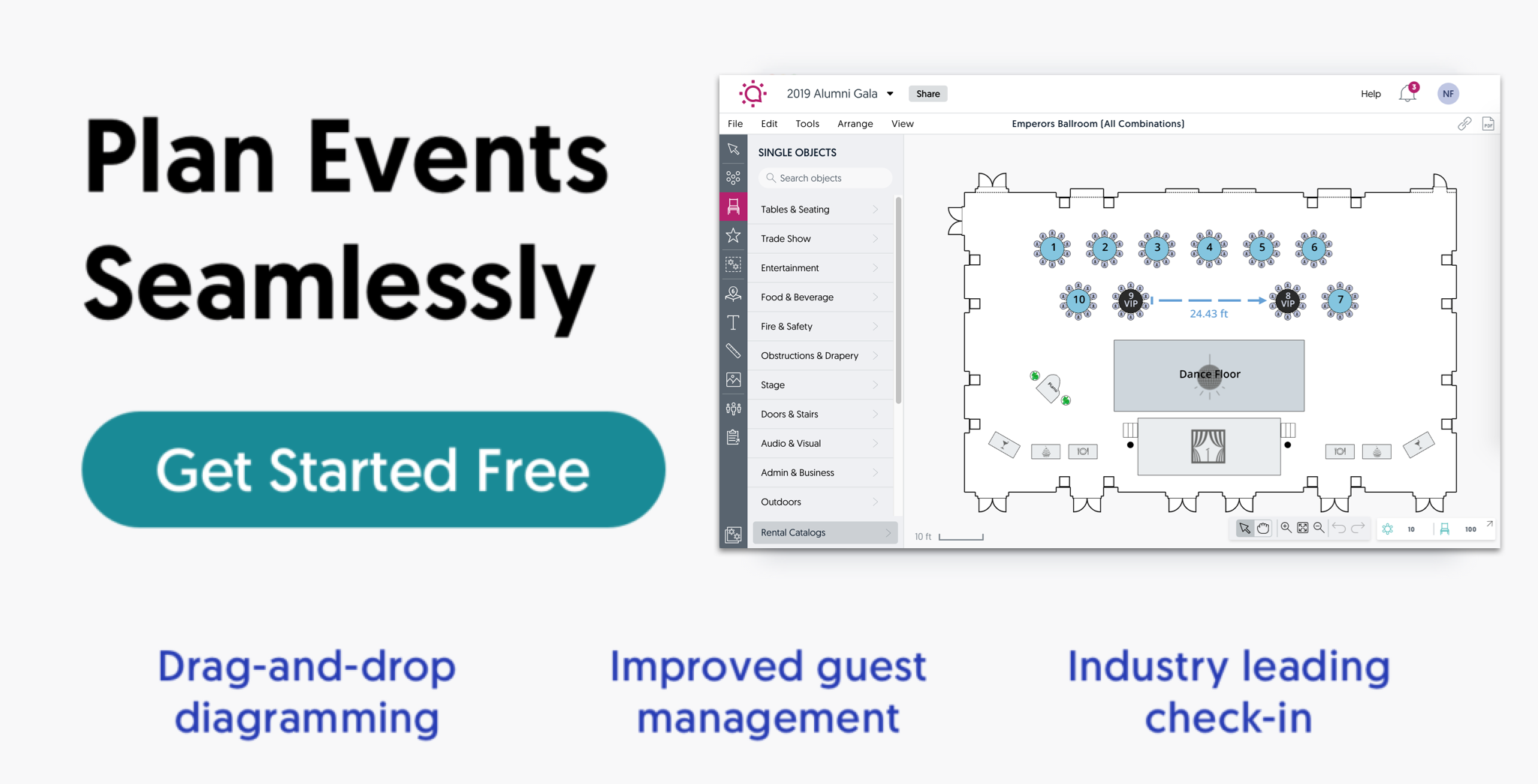
The Charity Event Planning Process: 5 Simple Steps
A charity event serves two purposes: to raise awareness for a specific cause and raise money. People by nature are very charitable and are willing to give to your organization to make a difference.
It’s up to you, though, to explain what your charity is and how it’s impacting lives. For better charity event planning, implement these steps to maximize both attendance and monetary donations.
1. Set a Budget
As a nonprofit organization, you’re going to ultimately be relying on sponsorship, donations, and ticket sales for covering event costs. Some of the money raised may also have to be used to cover the overhead. It makes sense then to set a budget and stick to it. While you want to wow your guests, you also don’t want to make the event so lavish that you end up with little funds left to give to the actual charity.
Budgeting tips to consider include:
- Opting for a single-plate meal as opposed to a buffet, or sticking to light refreshments
- Entertainment “ instead of hiring a professional entertainer, look for one willing to volunteer his time.
- Swag items “ limit swag to small items that can be produced by the quantity at a low cost, such as pens, coasters, and keychains.

2. Select a Theme

A theme always makes for a so much more fun event. This is important; people think that because charity event planning is raising awareness of a dire cause that the event is somehow supposed to be all serious. It doesn’t have to be that way at all. Create a lively atmosphere with a suitable theme.
Here are a few theme ideas:
Casino night “ set up various card game tables where guests can test their luck. This helps bring in additional money. Guests can also voluntarily donate the money they win.
Carnival night “ this is a good one if guests are bringing children along. Guests can purchase tokens to be used at carnival game booths. Again, money raised from the tokens helps bring in additional funds.
Auctions “ Auctions are a charity event staple. Items to auction away include handmade paintings, crafts, and items donated by companies sympathetic towards your cause.
3. Choose a Suitable Venue
This one ties back to your budget. Yes, you want an impressionable venue, but remember that the venue is usually the single biggest cost of the event. While you don’t want to use a high school gymnasium, you don’t want to have a spare-no-expense mindset either. Follow these tips when choosing a venue during charity event planning:
- Choose a venue that fits with your theme. If it’s a moonlight garden theme, for example, then there should be outdoor access.
- Have enough space to accommodate the expected turnout as well as additional equipment, such as game booths.
- Consider a venue that is routinely used for high-profile charity events. This way, you can market the venue as such.
Some venues are also perfect for certain types of charity events. If your organization promotes science-based education for underprivileged kids, for example, then a venue like London’s Earth Halls is perfect, since it’s practically a science museum.
4. Promote the Event on Social Media

Social media is the best place to promote your charity while keeping costs to a minimum. In the weeks leading up to the event, create an event hashtag and use it in all of your posts and encourage attendees to do the same.
Posts can include updates, encourage donations, or provide statistical facts about your cause (e.g. 1 in 4 kids suffer from malnutrition by the time they’re 10). It can also include inspirational stories of how peoples’ lives were positively impacted due to charity groups like your own.
During charity event planning, you can also link to photos or videos that illustrate why your cause is so important. Social media is also a platform for raising funds before the event. Think along the lines of the ALS Ice Bucket Challenge. Perhaps you can do something similar. Sure, it may not become a world trend, but it’ll attract a few extra people to spread the word and click the link to the donation site.
5. Continue to Promote After the Event
Your cause is an ongoing one, which is why awareness and contributions should continue well after the event. Continue to use the event hashtag for a few more days and also encourage people to continue to donate, all while keeping your followers updated on the total contribution amount and how the funds will be dispersed.
In the weeks after, share pics or posts related to post-event activity. Perhaps this can be a pic of you presenting a giant check to that children’s hospital you were raising funds for, or construction work to build that park in the inner city neighborhood that your event helped pay for.
People are donating because they care about the cause, so remind them of the difference that they are a part of.
People like you and your nonprofit org truly make a difference. By following these guidelines during charity event planning, you’ll maximize the positive impact and become a beacon of hope for your noble cause.

When it comes to the logistics, don’t leave anything to chance. Get the best of event diagramming, guest management, venue sourcing, and check-in ” all in one free event planning app.
Looking for more information about charity event planning?
Any event whose primary purpose is to generate funds for a cause, charity, or non-profit is considered a charity event. Thus, the purpose is raising money.
For larger non-profits, some of the most successful fundraising events are large-scale galas or other splashy events. Because it’s for a good cause, wealthy individuals will pay large sums of money to attend.

